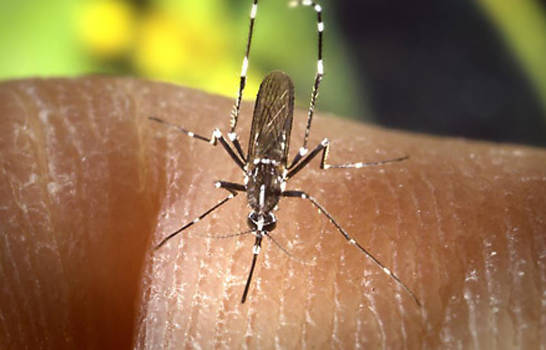
Deputy Minister of Collective Health Eladio Perez says that people are testing late for dengue, worsening their conditions. He says the earlier the disease is detected, the better the prognosis and urges people see a doctor early.
On the other hand, he says there has been a decrease in dengue cases, with most affected 10 to 19 years of age. Yet there is a lag in the updating of the official statistics of the Ministry of Health indicate there have been 12,911 cases of dengue and 11 deaths for dengue. Most of the cases have occurred in Greater Santo Domingo (Santo Domingo province and the National District), Santiago, La Vega, Barahona and Montecristi.
The Abinader administration announced it is creating the Dengue Action Cabinet to confront the disease that has affected thousands of people in the Dominican Republic. The intention is to increase the population’s awareness of the need for more prevention – eliminating the conditions for breeding the mosquito that spreads dengue.
The Cabinet groups ministries and agencies that are convened to work together with the Ministry of Public Health to strengthen the fight against dengue. President Abinader has resorted to convening specialized cabinets as task forces that unite government departments to tackle priority issues.
The Dengue Cabinet is formed by the ministries of the Presidency, Education, Defense, Public Works, Environment, in addition to the National Health Agency (SNS), Promese (that sells government-imported pharmaceuticals), the Dominican Municipal League (that unites city governments), the Emergency Operations Center (COE), Civil Defense and the Dominican Red Cross.
The prolonged heat wave and frequent rains have resulted in the extension of the seasonal dengue outbreak. Mosquitos, especially those transmitting dengue, love warm temperatures and humidity.
The World Health Organization explains that dengue (break-bone fever) is a viral infection that spreads from mosquitoes to people. It is more common in tropical and subtropical climates.
The problem is that most people who get dengue will have mild or no symptoms and will recover soon. Meanwhile, they can spread the disease if bitten by a mosquito.
The most common symptoms of dengue are high fever, headache, body aches, nausea and rash. Most people will also get better in 1–2 weeks. Some people develop severe dengue and need care in a hospital.
You can lower your risk of dengue by avoiding mosquito bites, especially during the day.
Dengue is treated with pain medicine as there is no specific treatment currently.
In severe cases, dengue can be fatal.
The problem is differentiating between influenza and dengue, before complications set in. There have been cases when people catch both viruses simultaneously.
Most people with dengue have mild or no symptoms and will get better in 1–2 weeks. Rarely, dengue can be severe and lead to death.
If symptoms occur, they usually begin 4–10 days after infection and last for 2–7 days. Symptoms may include:
• high fever (40°C/104°F)
• severe headache
• pain behind the eyes
• muscle and joint pains
• nausea
• vomiting
• swollen glands
• rash.
Individuals who are infected for the second time are at greater risk of severe dengue.
Severe dengue symptoms often come after the fever has gone away:
• severe abdominal pain
• persistent vomiting
• rapid breathing
• bleeding gums or nose
• fatigue
• restlessness
• blood in vomit or stool
• being very thirsty
• pale and cold skin
• feeling weak.
People with these severe symptoms should get care right away.
After recovery, people who have had dengue may feel tired for several weeks.
Most cases of dengue fever can be treated at home with pain medicine. Preventing mosquito bites is the best way to avoid getting dengue.
The Dominican Society of Pediatrics urges that dengue prevention take place all year round, especially given the impact of climate change that has extended the usual dengue season this year. The Society of Pediatrics emphasizes that transmission of dengue occurs year-round, even during cooler, drier months. While it agrees that public health preparedness should be focused during peak months to help cope with potentially large influxes of patients, the effort should be all year long.
In the Dominican Republic, the diagnosis usually relies on clinician assessments, which may be affected by underreporting or misdiagnosis for other febrile illnesses.
Read more:
Listin Diario
Hoy
Hoy
N Digital
N Digital
Noticias SIN
CDN
El Dia
WHO
National Institute of Health
19 October 2023

